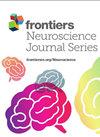iP3T: an interpretable multimodal time-series model for enhanced gait phase prediction in wearable exoskeletons
IF 3.2
3区 医学
Q2 NEUROSCIENCES
引用次数: 0
Abstract
IntroductionWearable exoskeletons assist individuals with mobility impairments, enhancing their gait and quality of life. This study presents the iP3T model, designed to optimize gait phase prediction through the fusion of multimodal time-series data.MethodsThe iP3T model integrates data from stretch sensors, inertial measurement units (IMUs), and surface electromyography (sEMG) to capture comprehensive biomechanical and neuromuscular signals. The model's architecture leverages transformer-based attention mechanisms to prioritize crucial data points. A series of experiments were conducted on a treadmill with five participants to validate the model's performance.ResultsThe iP3T model consistently outperformed traditional single-modality approaches. In the post-stance phase, the model achieved an RMSE of 1.073 and an RiP3T:用于增强可穿戴外骨骼步态阶段预测的可解释多模态时间序列模型
导言可穿戴外骨骼可帮助行动不便的人改善步态和生活质量。方法 iP3T 模型整合了拉伸传感器、惯性测量单元(IMU)和表面肌电图(sEMG)的数据,以捕捉全面的生物力学和神经肌肉信号。该模型的架构利用了基于变压器的注意力机制,对关键数据点进行优先排序。为了验证该模型的性能,我们在跑步机上对五名参与者进行了一系列实验。结果 iP3T 模型的性能始终优于传统的单一模式方法。在站立后阶段,该模型的 RMSE 为 1.073,R2 为 0.985。多模态数据的整合提高了预测的准确性,降低了辅助跑步机行走过程中的代谢成本。iP3T 模型中的注意机制有助于提高其可解释性,从而有效优化传感器配置,最终改善步态障碍患者的行动能力和生活质量。
本文章由计算机程序翻译,如有差异,请以英文原文为准。
求助全文
约1分钟内获得全文
求助全文
来源期刊

Frontiers in Neuroscience
NEUROSCIENCES-
CiteScore
6.20
自引率
4.70%
发文量
2070
审稿时长
14 weeks
期刊介绍:
Neural Technology is devoted to the convergence between neurobiology and quantum-, nano- and micro-sciences. In our vision, this interdisciplinary approach should go beyond the technological development of sophisticated methods and should contribute in generating a genuine change in our discipline.
 求助内容:
求助内容: 应助结果提醒方式:
应助结果提醒方式:


